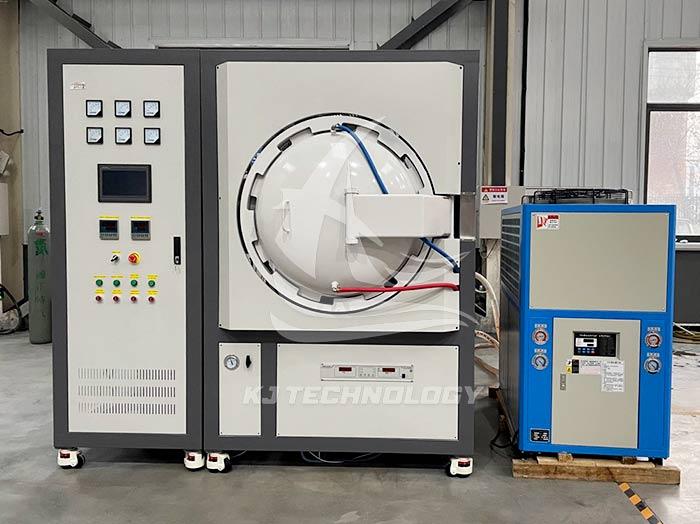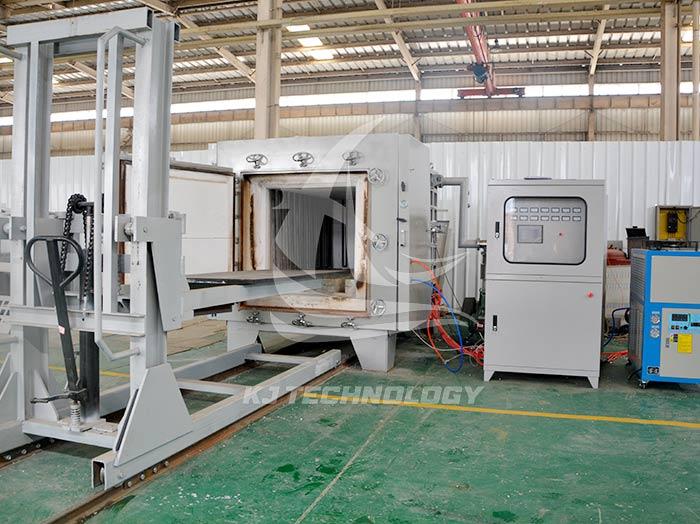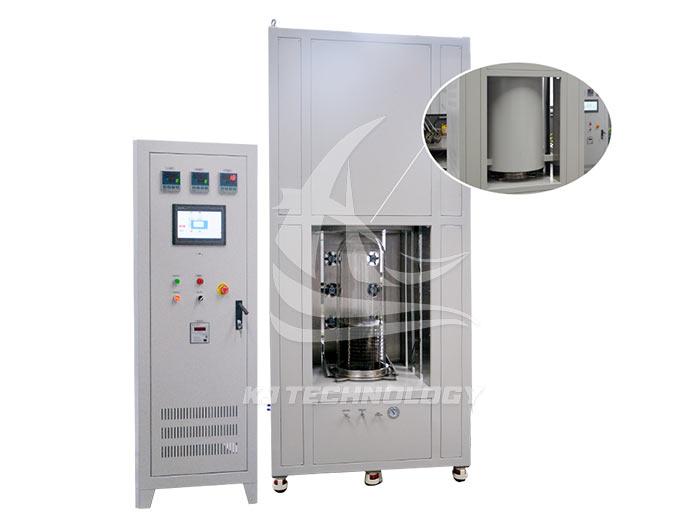Will diffusion welding vacuum furnace produce graphitization?
 08-18-2025 Author: KJ technology
08-18-2025 Author: KJ technology
The diffusion welding vacuum furnace may produce graphitization under specific conditions, but it can be effectively avoided by controlling process parameters and material selection reasonably. The following analysis will be conducted from three aspects: graphitization mechanism, diffusion welding conditions, and control measures:
1. The core mechanism of graphitization
Graphitization is the process by which carbonaceous materials transform from amorphous carbon to ordered graphite structures at high temperatures, with key influencing factors including:
Temperature: There is a significant difference in the temperature at which different carbon materials begin graphitization. For example, petroleum coke begins graphitization at 1700 ℃, while asphalt coke requires around 2000 ℃. If the diffusion welding temperature exceeds the critical value of the material (such as when the temperature is too high during diamond brazing), it may trigger graphitization.
Time: Prolonged high-temperature residence time promotes graphitization, but the effect is much lower than temperature increase. For example, short-term treatment at 3000 ℃ can significantly reduce electrical resistivity.
Pressure: Pressurization can lower the graphitization temperature. Research has shown that petroleum coke can graphitize at 1400~1500 ℃ under pressures ranging from 1 to 10 GPa; And vacuum conditions will inhibit the graphitization process.
Catalysts: Elements such as boron, iron, and silicon can promote graphitization, but the amount added needs to be controlled to avoid negative effects.
2. Potential scenarios for graphitization in diffusion welding vacuum furnaces
Diamond brazing:
Diamond is prone to graphitization at high temperatures (ignition point 850~1000 ℃, graphitization temperature above 1500 ℃). The vacuum furnace isolates oxygen by maintaining a low vacuum degree (such as 6.7 × 10 ⁻ ³ Pa) to prevent oxidation, but if the brazing temperature is too high (such as exceeding 1080 ℃), it may still cause diamond graphitization and reduce tool life.
Graphite component processing:
Components such as graphite heating elements and furnace chambers in vacuum furnaces may crack due to oxidation or thermal stress at high temperatures. If the sulfur content of graphite material is high or the thermal expansion coefficient is mismatched, it will exacerbate the tendency towards graphitization, leading to lattice defects and performance degradation.
Carbon material diffusion welding:
When welding carbon carbon composite materials or graphite metal, improper temperature control (such as exceeding 2500 ℃) may cause graphitization and affect joint strength.
3. Key control measures to avoid graphitization
Accurate temperature control:
Diamond brazing: The temperature should be controlled at 30-100 ℃ above the melting point of the brazing material (such as 950-1050 ℃ for Ni Cr based brazing material) to avoid diamond graphitization.
Carbon material welding: Select the appropriate temperature according to the material type (such as petroleum coke graphitization temperature>2500 ℃) and shorten the high-temperature residence time.
Stress and Atmosphere Management:
Pressurization can suppress graphitization, for example, applying 4.9 MPa pressure in diamond brazing can enhance joint strength.
Use high-purity protective gas (such as 99.99% argon) to reduce oxidation and avoid blackening of graphite parts.
Material selection and pretreatment:
Choose graphite materials with low sulfur and strong antioxidant capacity to reduce the risk of graphitization.
Polish and polish graphite components (surface roughness ≤ 0.5 μ m) or apply pyrolytic graphite/boron nitride coating to prevent dust volatilization and oxidation.
Process optimization:
Adopting segmented heating and gradient pressure to reduce thermal stress damage to graphite components.
For example, when vacuum diffusion welding graphite samples, the temperature is first raised to 600 ℃ at a rate of 10 ℃/min and preloaded with 10MPa, then raised to the target temperature and uniformly pressurized to 30MPa. After holding for 60 minutes, the temperature is lowered at a rate of 5 ℃/min.








